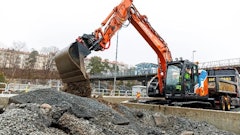Iran is one of the largest economies in the Middle East with a Gross Domestic Product (GDP) comparable to Austria. Population wise it’s the second largest after Egypt and the size of the economy is only superseded by Saudi Arabia.
The Iranian economy is characterized by a large dependency on oil. Due to the low oil prices economic growth was relatively low in 2015. However, there is the expectation it will pick up this year and in the coming years, with growth rates above 4%.
Although agricultural production in Iran grew rapidly over the last 10 years, it remains rather a complementary part of the economy counting for only 9.3% of GDP. In terms of the agricultural potential, Iran can be compared with Turkey – given a similar amount of arable land, rural and total population, as well as the percentage of agriculture contributing to GDP.
Iranian agricultural policy is developed via Five Years Development Plans (FYDP). The 5 th FYDP (2011-2015) included a goal to become self-sufficient regarding food production. Production was supposed to grow via government assistance, tax exemptions, and short-term credit facilities. The latest 6 th FDYP (2016-2021) includes the increase of loan provision to farmers and the need to adopt modern technologies in strategic industries like the agricultural sector.












